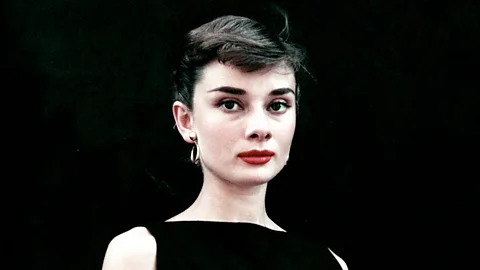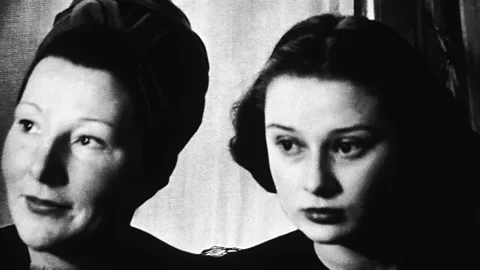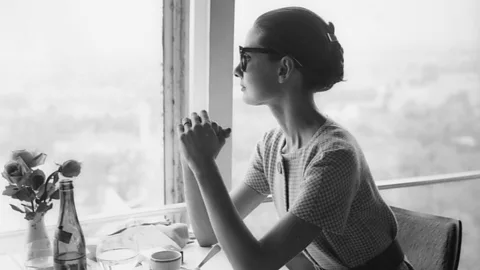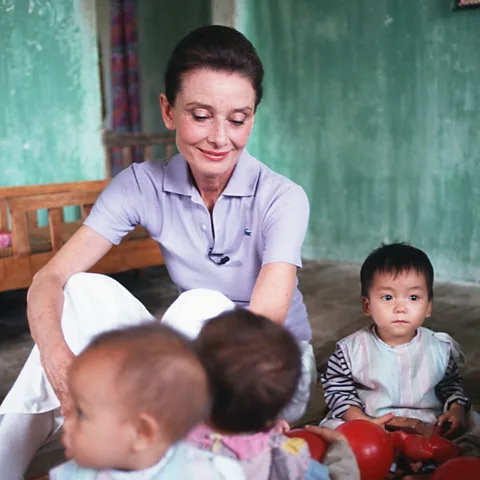 Getty Images
Getty ImagesAs a teenager growing up in the Netherlands, the Oscar-winning actress bravely carried messages for the Dutch resistance during the Nazi occupation.
On the BBC Radio 4 podcast History’s Youngest Heroes, Nicola Coughlan shines a light on extraordinary tales of rebellion, risk and the radical power of youth, telling the stories of young people throughout history who have changed the world.
The latest episode focussed on Audrey Hepburn, who became a film and fashion icon in the 1950s and ’60s. She was nominated for five Oscars and won the best actress award in 1953 for her performance in Roman Holiday. Yet as a teenager during World War Two, she played a very different role – staging secret ballet performances to raise money for the Dutch resistance to Nazi occupation.
 Getty Images
Getty ImagesHepburn was born in Brussels in 1929 to a Dutch baroness, Ella van Heemstra, and a British-Austrian businessman, Joseph Hepburn-Ruston. In London, her parents were drawn to Oswald Mosley, leader of the violent antisemitic British Union of Fascists (BUF). Van Heemstra wrote an article for the BUF’s magazine about what she saw as the glories of Nazi Germany. Hepburn-Ruston walked out on the family when Hepburn was six years old. He would later be arrested as “an associate of foreign fascists” and spend the war in British prisons.
“Even as a little girl, you know, she was extroverted, laughing, playing, acting. My grandfather called her ‘monkey puzzle,'” Luca Dotti, the actress’s youngest son, tells Robert Matzen, author of Dutch Girl, which chronicles Hepburn’s life during World War Two, in an interview for History’s Youngest Heroes.
“Audrey’s mother decided that England in general and Kent, in particular, was no place for Audrey because of the looming threat, suddenly, that the Germans would storm across France and launch an invasion of England,” Matzen says.
Van Heemstra pulled her daughter out of her British boarding school. They moved to a family estate in the Netherlands, and Audrey enrolled in a dance school, going by a more Dutch-sounding name, Adriaantje van Heemstra (she would later change her surname to Hepburn when she started acting.) Her mother still admired Adolf Hitler and believed he would never invade “her” country.
“Moving to Holland was not moving home. She couldn’t speak Dutch. She had to go to a Dutch school without understanding a single word with new children who made fun of her,” Dotti says, of his mother’s experience in the Netherlands.
Hitler did invade and occupy the Netherlands in May 1940. “The Eastern Front was a furnace that you could not shovel resources into fast enough. The Germans needed food for the troops, they needed clothing for the troops, and it was all taken from the Dutch and the other occupied countries,” Matzen says of the situation.
Hepburn’s uncle, Count Otto van Limburg Stirum, took a principled stand against the Nazis. In 1942, a resistance group attempted to blow up a German train near Rotterdam. Though van Limburg Stirum was not involved, he was arrested because he was a prominent anti-Nazi figure. Nazi agents drove him and four others into the forest, shot them, and dumped their bodies in unmarked graves. Hepburn loved her uncle as a surrogate father and was devastated by his murder. “It became a national incident, an inciting point for the Dutch people,” Matzen says.
Though her family was privileged, the Nazis diverted food and resources away from the Netherlands, and the Van Heemstra family went hungry. When Hepburn turned 15, she was ordered to join the Nazi Kulturkammer, the artists’ union, or give up publicly performing dance. She chose to give up performing.
 Getty Images
Getty Images“Through dance she could dream, she could fly, she could forget. It was the way that she escaped reality,” Dotti says of his mother’s passion. Hepburn danced in a safe house with closed blinds and only a candle for light, so she would not be discovered. A piano played very softly while she performed – but there could be no applause. At the end of the show, money was collected for the resistance.
From ballerina to spy
In the spring of 1944, Hepburn volunteered as an assistant to a doctor – Hendrik Visser ‘t Hooft – who was a member of the resistance. Though Hepburn’s mother was widely seen as a collaborator with the Nazis, Visser ‘t Hooft desperately needed help to support thousands of people who were in hiding from the Nazis. He trusted her enough to bring her in.
On 17 September 1944, Hepburn was at church when the hymn was interrupted by the whirr of engines. Operation Market Garden, which was a plan by the Allied Forces to seize nine bridges spanning the Rhine River, had started – and when she ran outside and looked up, thousands of Allied troops were floating down on parachutes.
Unfortunately, two heavily armoured Nazi divisions were regrouping in the area. Nazi tanks rolled in front of the Van Heemstras’ house. Hepburn and her family hid in the cellar while the battle raged for nine days. When they emerged, it was to the news that the Nazis had won. She heard screams from a building where the Nazis were carrying out reprisals: torturing and killing members of the Dutch resistance.
When Allied airmen heading for Germany had to make an emergency landing in the Netherlands, Visser ‘t Hooft sent Hepburn to the forest to meet a British paratrooper with code words and a secret message hidden in her sock. She made the meeting, but on the way out of the forest, she saw Dutch police approaching. She bent down to pick wildflowers, then flirtatiously presented them to the police. They were charmed and didn’t interrogate her further. After this, she often carried messages for the resistance.
“She believed very much that there is a struggle between good and evil and you have to take sides,” Dotti says.
“The Germans didn’t take children seriously. ‘Just get out of my way, kid.’ You know, that kind of thing. The Dutch were practical enough to see that the children, because they weren’t suspected of anything, could be the ones who ran the messages, who did these vital things for the resistance, and the children loved it. It was exciting, it was dangerous, and they became heroes of the resistance,” Matzen adds.
By February 1945, it was reported that 500 Dutch people were starving to death every week. Like so many others, Hepburn and her family were desperately short of food. She became severely ill with anaemia, jaundice and edema.
With ferocious fighting again raging outside their front door, Hepburn and her family hid in the cellar for three weeks. Finally, on 16 April 1945, it went quiet. She smelled tobacco, which was impossible to get in the Netherlands during the war. She climbed the stairs from the cellar and opened the door to see five Canadian soldiers smoking cigarettes and pointing machine guns at her. Immediately, she started to speak to them in English. One yelled: “Not only have we liberated a town – we’ve liberated an English girl!”
 Getty Images
Getty ImagesHepburn later told her son that she never forgave her mother for having fascist sympathies. When the war was over, she earned a scholarship to Ballet Rambert in London. Though she was talented, her constitution was permanently damaged by malnutrition, and she did not have the stamina to become a ballerina. Instead, she turned to acting, with small roles in West End theatre and films such as The Lavender Hill Mob.
In 1953, she won her first lead role in Roman Holiday. It was a massive critical and commercial success, and, on top of her Oscar for that film, Hepburn would go on to earn Emmy, Grammy and Tony awards. Throughout her career, she continued to pursue charitable work, notably as a goodwill ambassador for Unicef. She died in 1993.
“Audrey’s instincts were honed to very fine point by the war and everything that she went through, and she had so much experience to draw upon that she could put herself into these various characters,” Matzen says.
* This article is adapted from a script by Alex von Tunzelmann.
** In History’s Youngest Heroes, actress Nicola Coughlan tells 12 true stories of rebellion and the radical power of youth. Past episodes have highlighted Nelson Mandela, Lady Jane Grey and Terry Fox. The series showcases the inspiring tales of both forgotten and famous young heroes who demonstrated how young people can change history.









Recent Comments